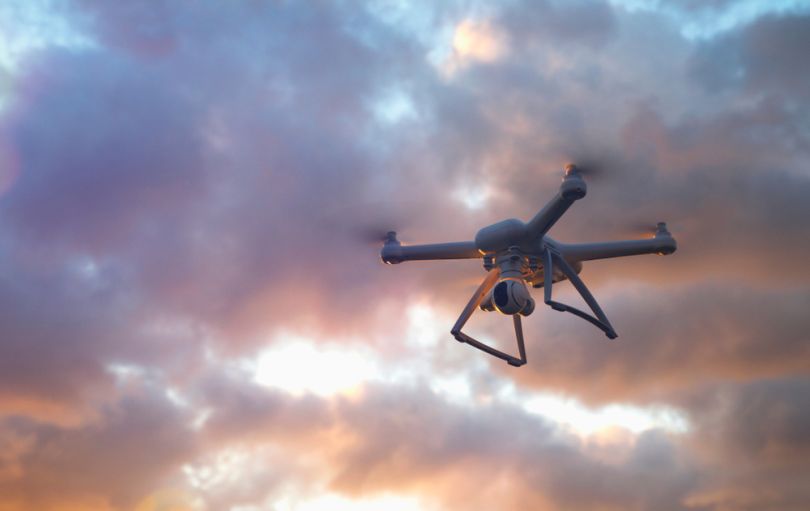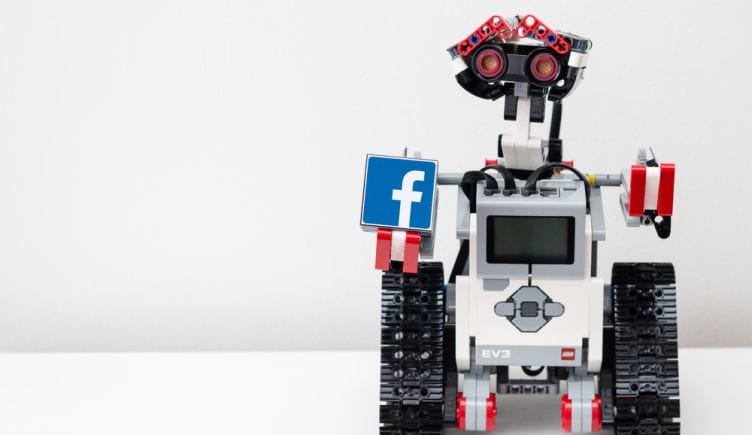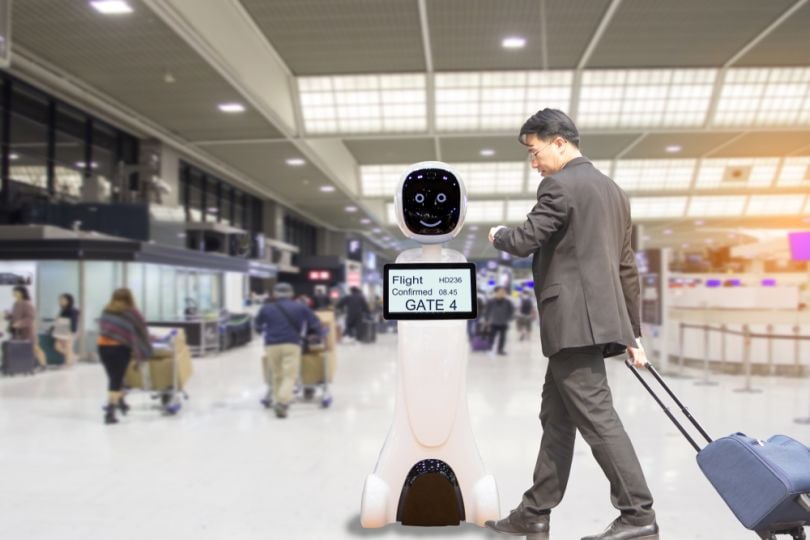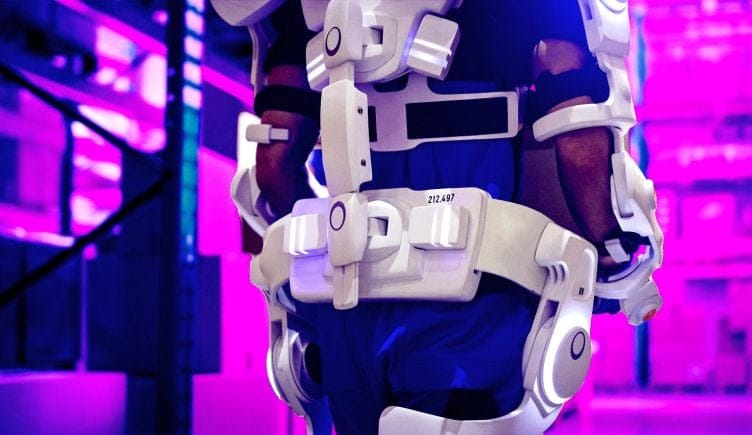 Image: Shutterstock / Built In
Image: Shutterstock / Built In
Iron Man might be part of the fictional Marvel Universe, but the suit? Yep, that tech really exists.
Exoskeleton suits aren’t robots but rather wearable devices that work with the user to enhance their strength and performance to complete tasks or to rehabilitate their body.
And in the coming years, exoskeletons are expected to yield more than super body strength. The industry is expected to soar from $68 million in 2014 to a whopping $7.3 billion by 2030, according to Lian Jye Su, research director at global technology intelligence firm ABI Research. The future for exoskeletons is looking mighty powerful.
Logistics and manufacturing are two key markets where exoskeletons are used, and like the construction and agricultural industries, these human-power-enhancing equipment devices are primarily used to perform heavy lifting, extended squatting, lifting, bending and walking around a company’s facilities, Su said.
The military is expected to play a larger role in the exoskeleton market in the coming years, raising the prospect that Iron Man may not be too far off in the future one day.
DARPA has been funding the development of exoskeletons applications for many years, Su noted. And in July 2020, the U.S. Marines awarded a contract to Sarcos Robotics to use its Guardian XO exoskeletons. The XOs help the Marines safely and efficiently lift, pull, push, transport and manipulate loads, he added.
The military, in fact, helped to kick off the use of exoskeletons. These devices were first launched in 1965, when General Electric developed the Hardiman exoskeleton for military use. Since then, a number of companies have moved into the exoskeleton industry and Su provided a list of the top manufacturers.
Top 10 Manufacturers of Exoskeleton Suits
- Comau
- Cyberdyne
- Ekso Bionics
- German Bionic
- Hyundai Motor Group
- Lockheed Martin
- Ottobock
- ReWalk Robotics
- Sarcos Robotics
- Wandercraft
But don’t expect the consumer market to drive large adoption and push down the price of exoskeletons, which can easily run $5,000 and up.
“The price of these suits makes them very prohibitive for wide consumer adoption at the moment,” Su said, adding he doesn’t see any use cases that will serve as a catalyst for the consumer market.
Physical rehabilitation is one way that consumers are exposed to exoskeletons, but typically they are purchased and used at rehabilitation and physical therapy centers versus purchased directly by consumers.
More on RoboticsHow Companion Uses TensorFlow to Build a Robotic Pet Trainer
Types of Exoskeleton Suits
Sports and Marketing

Exosapien Technologies: Prosthesis
Get your racing shoes on, er, make that racing exoskeleton. Prosthesis stands more than 14 feet tall and is solely controlled by a human operator, electro-hydraulics and direct touch feedback, according to Prosthesis’ creator Jonathan Tippett on YouTube. Based on a user’s hand, arm, leg and feet movements, Prosthesis can run upwards of 20 mph, powered by a lithium-ion battery. Tippett said he developed Prosthesis to launch a new sport of mechanical racing.
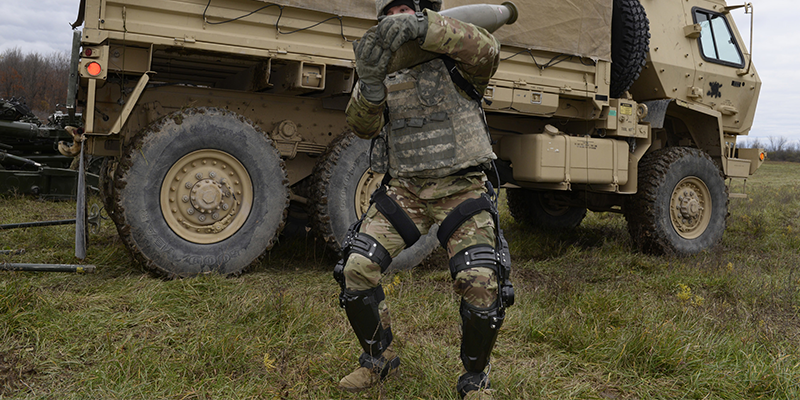
Lockheed Martin: Onyx Exoskeleton
Military and first responders are the target market for Onyx Exoskeleton. Imagine charging up a hill carrying rounds of ammunition or climbing stairs with a hefty firehouse. Pretty heavy. The Onyx Exoskeleton, which uses AI, gathers movement data from users’ feet, knee and hip sensors and forwards it to a control module stationed on the waist which instructs the exoskeleton to move accordingly, Lockheed Martin said on its site.
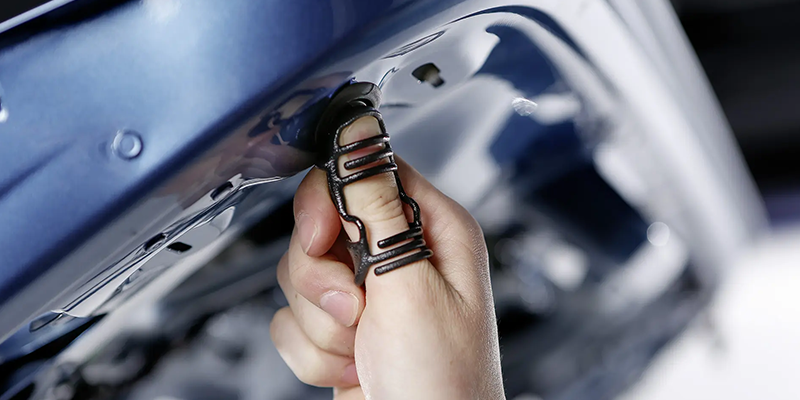
Ottobock: Paexo Thumb
Even the lowly thumb needs a break if it’s put to daily rigorous tasks like frequently pushing buttons, using clippers or plugging in items on a spreadsheet. That’s where the world’s smallest exoskeleton comes in to protect the tip of the thumb and relieve strain on the joints in the hand. The Paexo Thumb is designed to cut 70 percent of the strain on the thumb joint by redirecting the pressure across your entire hand, Otttobock said in its report of the small exoskeleton.
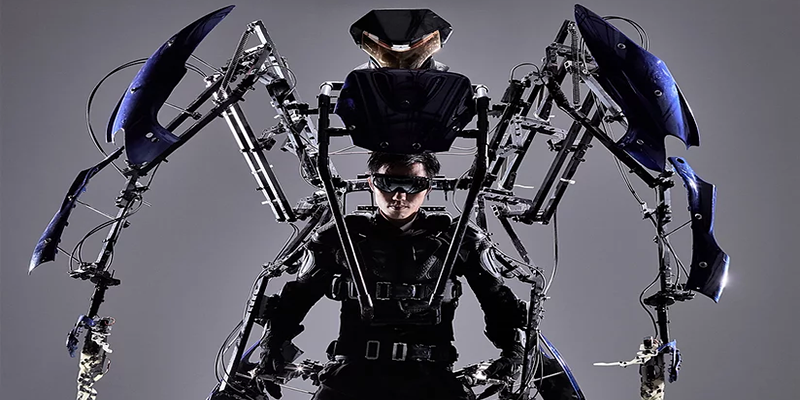
Skeletonics: Skeletonics Arrive
Want to be bigger than life? Literally? Skeletronics will supersize you to nearly 10 feet tall and enable you to walk through a crowd of people like a proverbial giant. With a fusion of mechanics and electronics, the fingers are able to move with precision, as well as the legs. Kinetic energy moves Skeletonics instead of a battery or electricity, the company said on its website.
More on Robotic Innovation35 Robotics Companies on the Forefront of Innovation
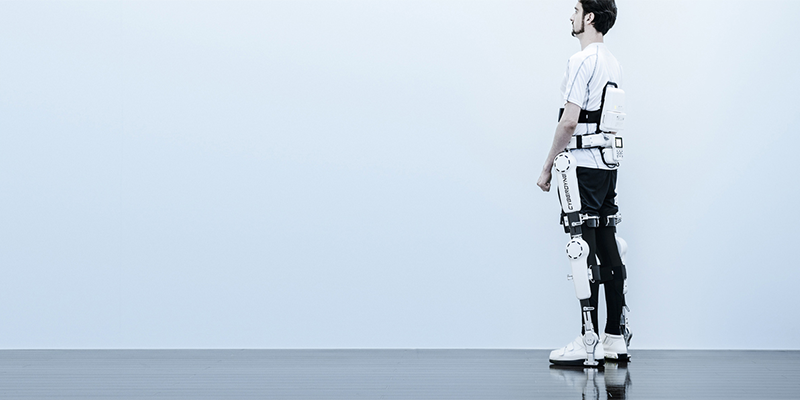
Rehabilitation Exoskeletons
Cyberdyne: HAL for Medical Use (Lower Limb)
Hybrid Assistive Limb (HAL) is used by patients who suffer from spinal cord injuries, cerebrovascular diseases, traumatic brain injuries and other neuromuscular diseases or injuries. Brain signals to the muscles are captured on sensors placed on the legs, which feed the information to HAL, which in turn helps the user move and walk with their legs by merely thinking of moving their legs, according to a video by Brooks Rehabilitation.
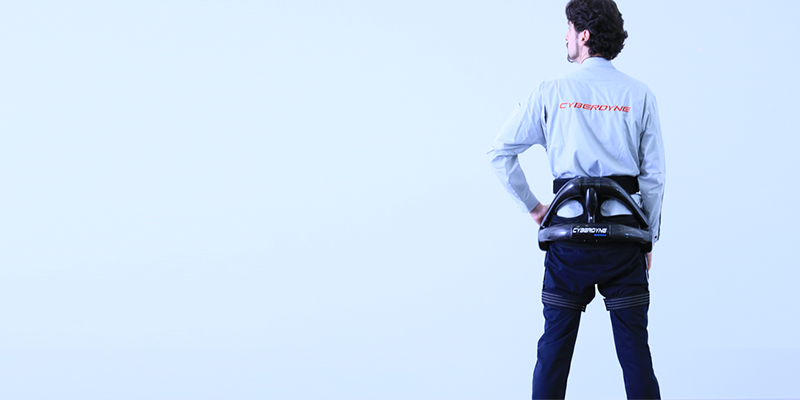
Cyberdyne: HAL Lumbar Type for Labor Support
HAL can multi-task, serving as both a physical therapy exoskeleton and also one to aid healthcare workers, according to Cyberdyyne’s product page site. The battery-operated HAL Lumbar Type for Labor Support exoskeleton is designed to provide lumbar support when users are lifting and moving items or people, such as nurses moving patients, or seniors seeking physical therapy getting assistance when sitting down or standing up.
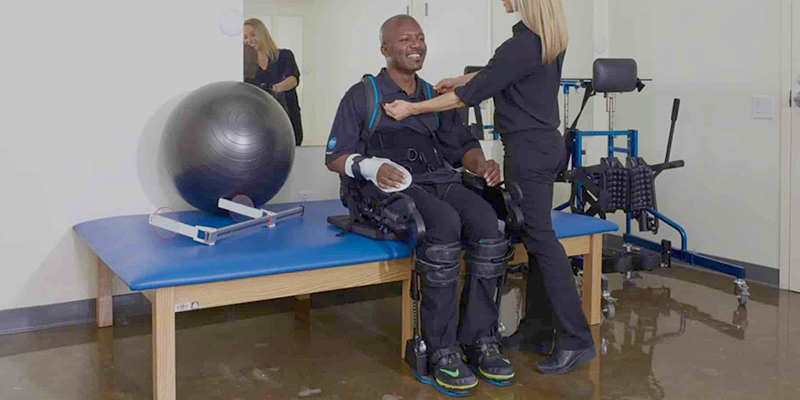
Esko Bionics: EksoNR
FDA-approved EksoNR is an exoskeleton for neurological rehab patients that is used in healthcare rehabilitation centers. The suit is designed to help brain injury, multiple sclerosis and spinal cord injury patients, as well as stroke victims, regain their natural walking gait by re-teaching the brain and muscles how to walk, according to Esko Bionics.
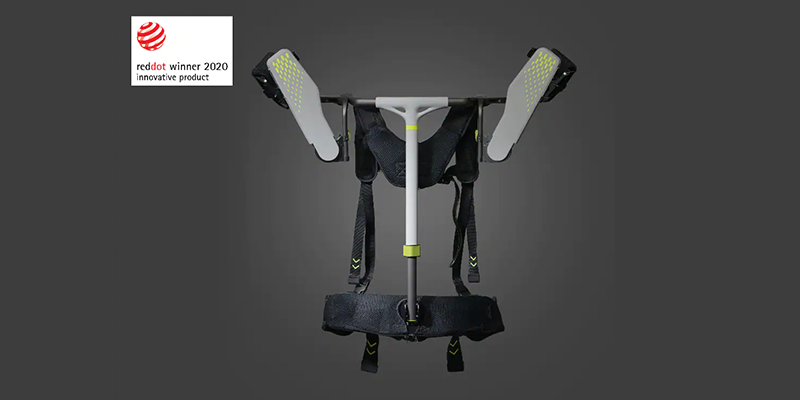
Hyundai: Hyundai Medical Exoskeleton (H-MEX)
Automotive giant Hyundai hit the accelerator on a new path, expanding into exoskeletons. In addition to developing exoskeletons for assembly line workers to aid them with their overhead work, the automaker also developed one to assist patients suffering from spinal cord injuries with its H-MEX. The device aims to help patients sit, stand, walk, navigate stairs and even run if needed, states the Exoskeleton Report.
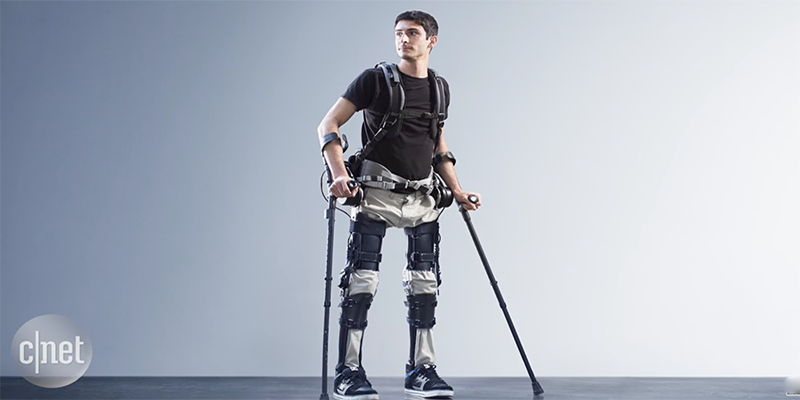
Ottobock: Phoenix Medical Exoskeleton
This lightweight exoskeleton is designed to help people who have mobility disorders stand upright and gain mobility. Phoenix has two devices at the hip that prompts the machine to operate. Its knee joints provide support when users are standing and helps them clear the ground as their leg swings forward, states CNET.d.
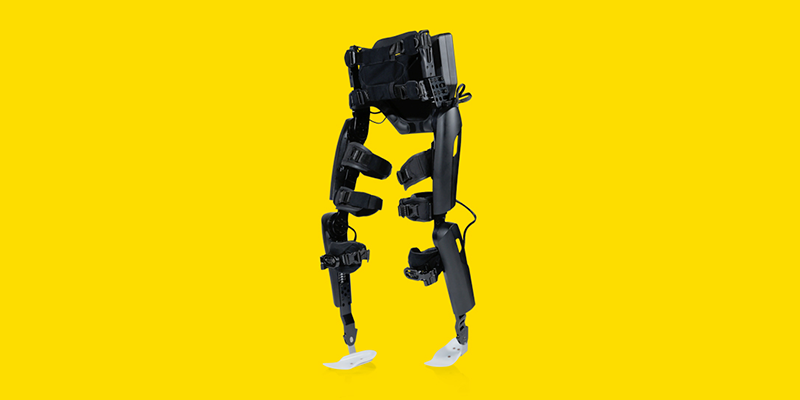
ReWalk Robotics: ReWalk Personal 6.0 Exoskeleton
This consumer exoskeleton is designed for home use and when users are out and about in the community. It’s a light-weight exoskeleton, with motors at the hip and knee joints and propels a user forward as they lean into their next step, mimicking the natural movement of their steps, ReWalk stated on its website.
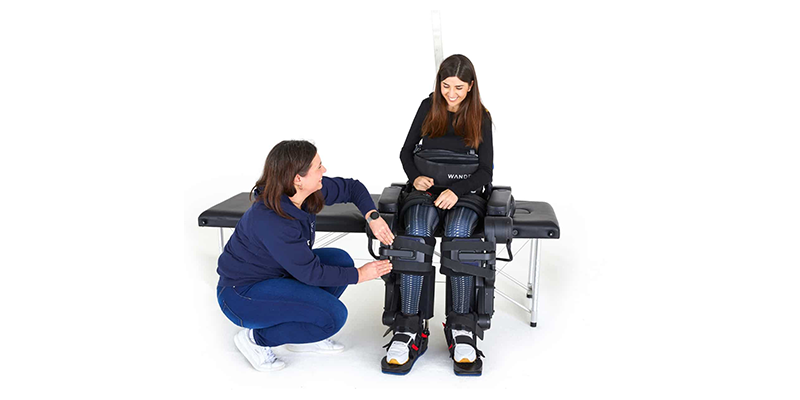
Wandercraft: Atalante X
Patients suffering from paralysis may be able to walk again with the aid of this self-balancing, hands-free exoskeleton, Wandercraft states on their website. Atalante X allows patients to stand and sit on their own and walk with assistance. It’s designed to be used as a rehabilitation tool following an accident or brain injury that causes paralysis.
Exoskeletons for Construction, Manufacturing and Agriculture
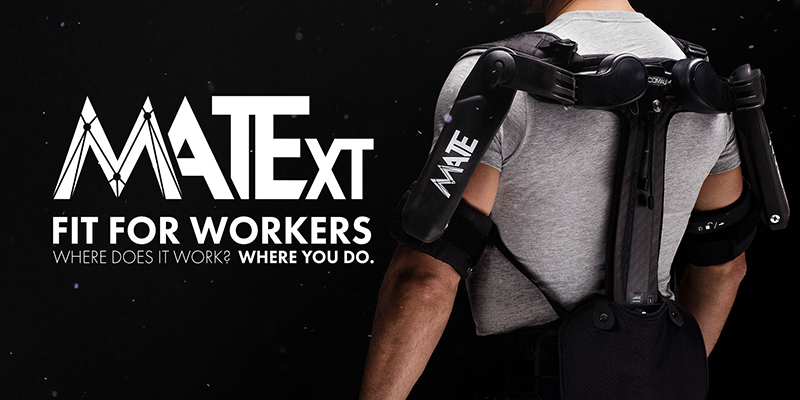
Comau: Mate Exoskeleton
Mate is designed to help production workers reduce upper body fatigue by supporting their shoulder movement and has 8 different levels of assistance that workers can quickly adjust. The lightweight device operates without a battery or motor and its manufacturer says it can increase overhead task accuracy by 27 percent and execution speed by 10 percent.
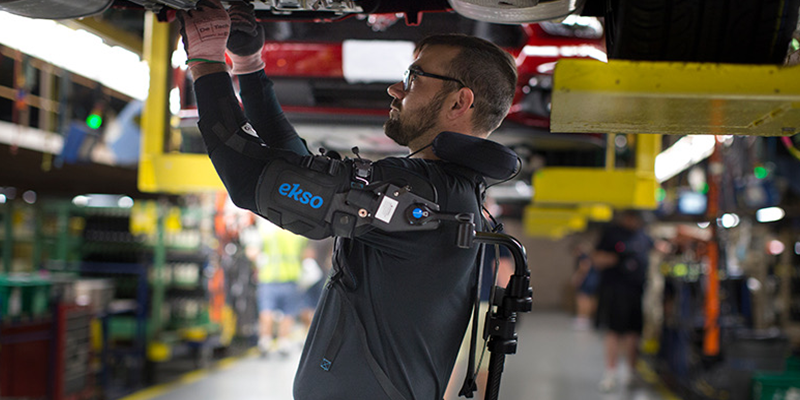
Esko Bionics: EksoVest
It takes more than eating spinach to get the performance boost like Popeye. Manufacturing and construction workers can get their strength boost by wearing an EksoVest, which provides upper-body strength and can reduce the stress and fatigue on their arms, neck and other body joints.
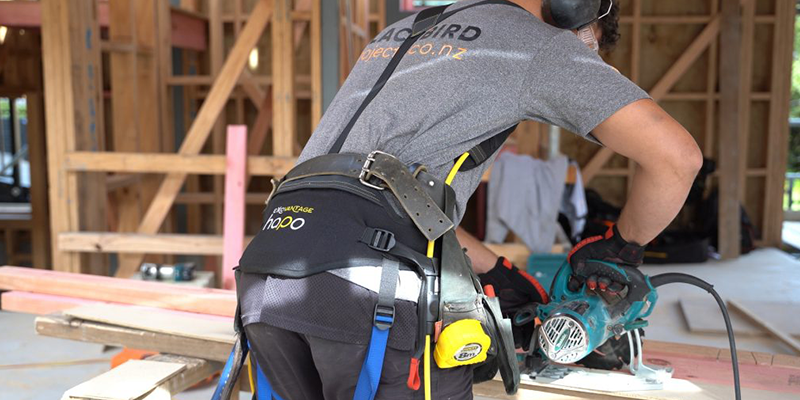
Exxovantage: HAPO Exoskeleton
Back-breaking farmwork is nothing new but throwing in technology to extend the life of farmers’ backs is relatively new. Farmers are giving exoskeletons a try like the HAPO system, which is lightweight, batteryless and spring-loaded to ease the demands of repetitive tasks, Exxovantage states on its website. The exoskeleton supports the upper body by partially transferring movement from the chest area to the thighs without compressing the spine and, as a result, reduces back strain.
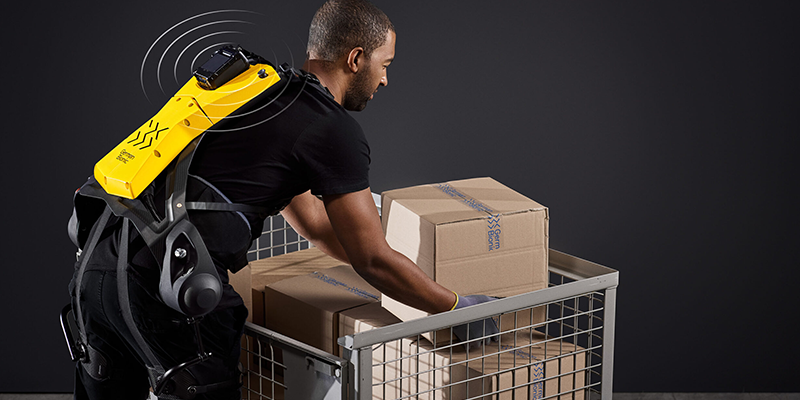
German Bionic: Cray X Exoskeleton
Cray X is helping manufacturing plant workers reduce their fatigue and injury when lifting objects or carrying them with its X Exoskeleton, according to German Bionic. The device provides support for up to 66 pounds. The lightweight, waterproof exoskeleton uses AI, as well as an early warning system, to counter poor posture and harmful lifting practices before they occur due to fatigue.
More on RoboticsRobots Aren’t Just for High-Tech Labs and Heavy Industry Anymore. And That’s a Good Thing.
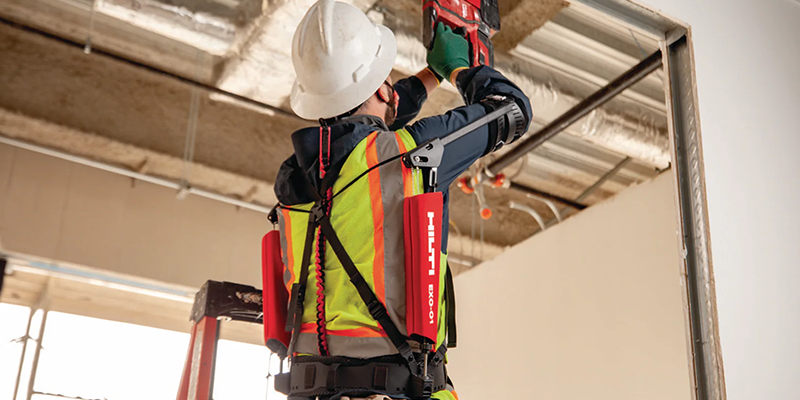
Hilti: Exoskeleton HA EXO-01 Overhead
Adding a new twist to the notion of steel girders in the construction industry, builders are putting on their own version of support when doing overhead work with the help of exoskeletons. The ultralight weight HA EXO-01 aims to reduce arm and shoulder muscle fatigue when doing overhead work for long periods of time, according to Hilti.e. It’s a battery-less device designed to support the arms and torso without restricting the range of motion.
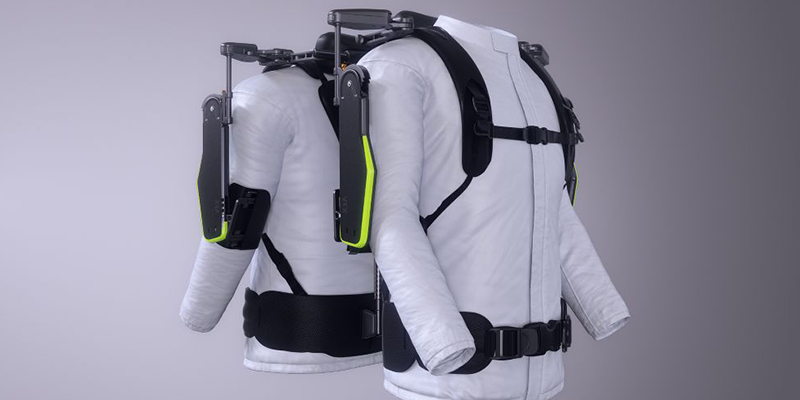
Hyundai: Vest Exoskeleton (VEX)
Overhead work can be draining on the shoulders and neck and this exoskeleton aims to reduce the strain for industrial workers with this battery-free device. Vest Exoskeleton imitates the way a shoulder joint operates and is designed to offer load support, mobility and adapt to the way a worker operates when handling overhead tasks, Hyundai said in is report.
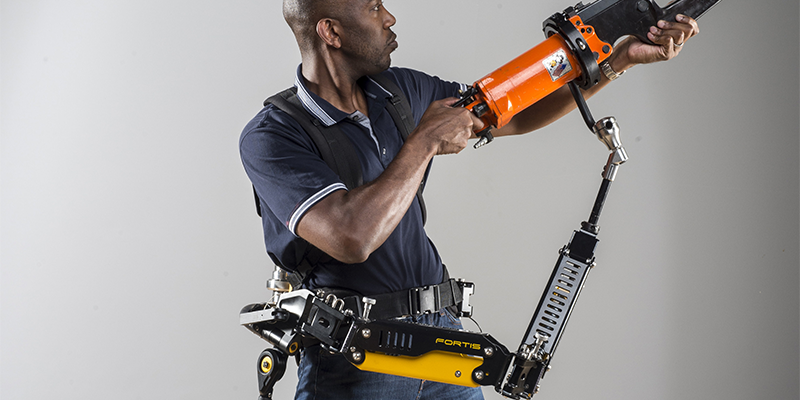
Lockheed Martin: Fortis
Call it a third hand. This exoskeleton has a robotic arm that extends from the waist to hold heavy tools that weigh up to 36 pounds as the operator uses the tool, according to Lockheed. Fortis’ ergonomic design aims to make the tool feel weightless, so an operator can work longer without fatigue and use their hands freely.
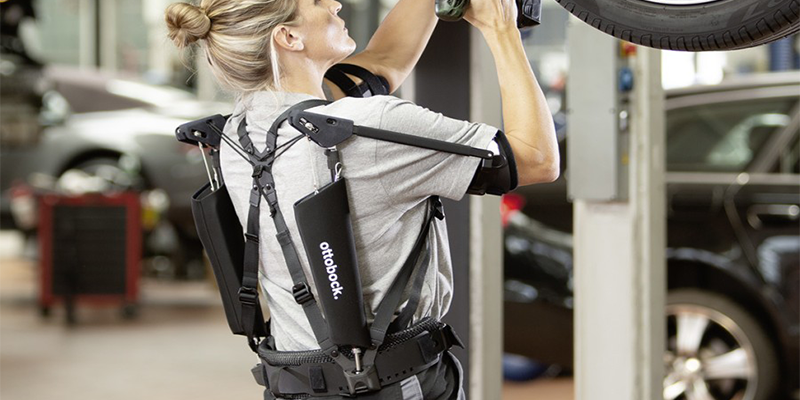
Ottobock SE & Co.: Ottobock Back
Take a weight off your shoulders and back too. The Ottobock Back exoskeleton provides back support to warehouse workers and helps take a load off of their shoulders when lifting or carrying items and transfers that weight to the user’s thighs, similar to a backpack. It provides up to 55 pounds of support and can tell the difference when bending or walking and can also automatically switch off when needed to provide full-freedom of movement, the company noted on its website..
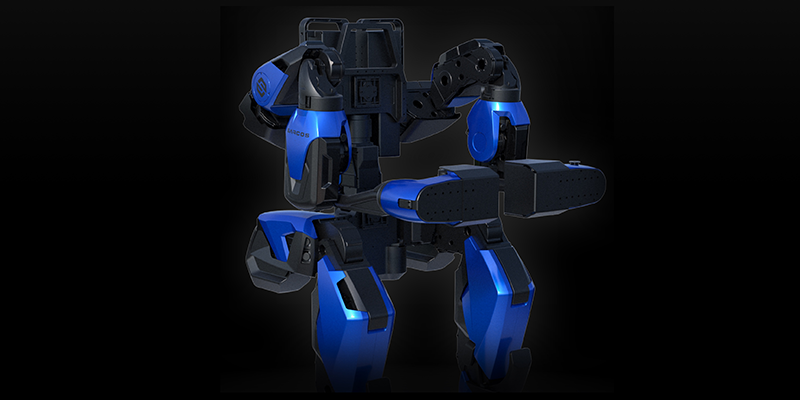
Sarco Robotics: Guardian XO
The Guardian XO can be used in a warehouse setting, a manufacturing plant, a construction site or other types of operations that call for physically demanding strength. It is not a tactical military machine — it’s more of a logistics machine, according to the company’s website. The full-body battery-operated exoskeleton uses sensors on the body to enhance the operator’s strength, allowing a user to lift up to 200 pounds without strain or fatigue.
If the website content violates your rights, please contact us to delete it。



